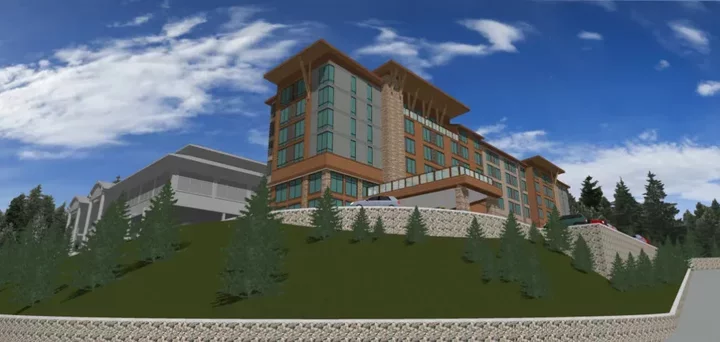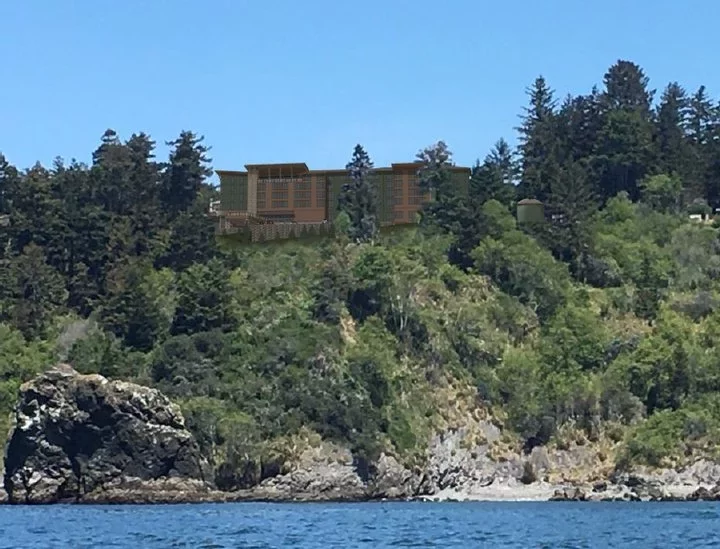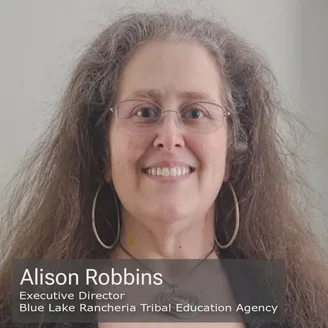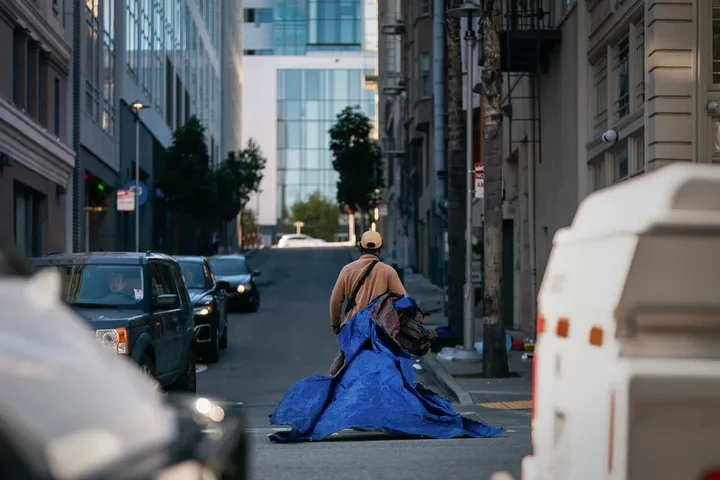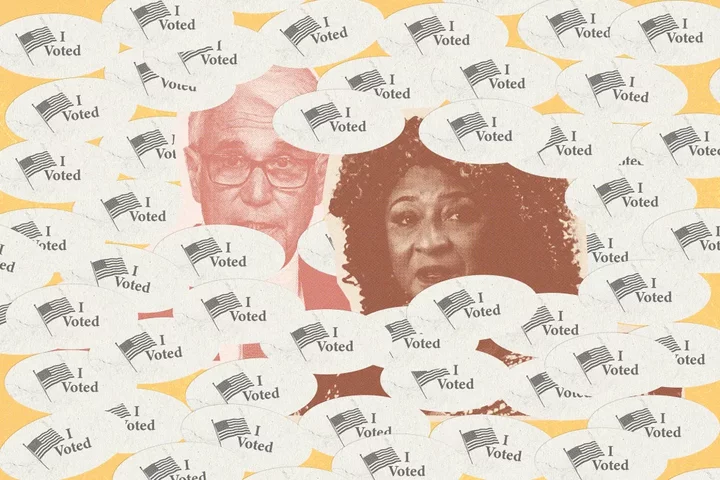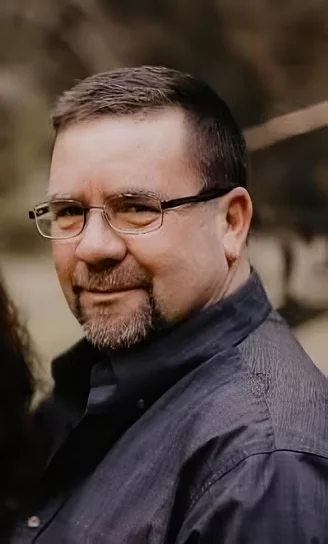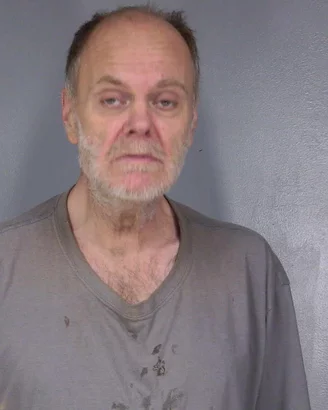Appeals Court Rejects Coastal Commission’s Approval of Trinidad Rancheria’s Planned Hyatt Hotel Project
Ryan Burns / Tuesday, Nov. 26, 2024 @ 2:34 p.m. / Government , Tribes
Rendering of a proposed five-story, 100-room Hyatt hotel proposed on the bluff adjacent to the Cher-Ae Heights Casino, overlooking the Pacific. | Image via California Coastal Commission.
###
The Trinidad Rancheria’s plans for a 100-room, five-story Hyatt Hotel overlooking the Pacific Ocean have been sent back to the California Coastal Commission for further review after a state appeals court yesterday ruled that there’s not enough evidence to show that the hotel would have adequate fire protection services.
The three-judge appellate court decision, which affirms last month’s tentative ruling , represents a setback for the Rancheria and a victory for the Humboldt Alliance for Responsible Planning (HARP), a nonprofit group focused on development issues in the Trinidad-Westhaven area.
The ruling effectively undoes a decision made by the California Coastal Commission more than five years ago, albeit on very narrow grounds.
Back in August 2019, at the end of a convoluted and often confused hearing, the commission voted 5-6 to conditionally agree with a determination from the federal Bureau of Indian Affairs (BIA), finding the hotel project consistent with the California Coastal Act. The condition was that the BIA must provide evidence that the project has an adequate water supply before starting construction. (The Tribe has yet to secure that supply.)
[CLARIFICATION: As a commenter correctly points out below, the Tribe has signed a memorandum of understanding with the Humboldt Bay Municipal Water District to extend the district’s service north to the Rancheria. However, the Tribe is responsible for completing the design and permitting work. When the Outpost last asked the Tribe about its progress in that regard, CEO Jacque Hostler-Carmesin said via email, “We have been so busy with all of our other projects, we have not been working on this.” That was nearly a year ago, though, and our commenter says an engineer has since been hired.]
HARP, whose members had long opposed the project, filed a petition for writ of administrative mandamus (an appeal, effectively) seeking to overturn the Coastal Commission’s decision on five separate grounds. Through its attorney the group argued that the Commission had:
- applied the wrong legal standard in assessing the visual impact of the proposed hotel;
- failed to sufficiently state its basis for finding that the hotel would be visually compatible with the its natural surroundings;
- improperly relied on its Environmental Justice Policy and the doctrine of tribal sovereignty;
- abused its discretion by issuing a conditional concurrence, rather than an objection; and
- failed to make express findings that fire protection services were adequate based on the evidence in the administrative record.
A trial court denied HARP’s petition, but yesterday’s appellate court ruling reverses that decision based solely on that last claim, the one regarding fire protection services. The judges’ panel agrees that the other four complaints were without merit.
The Cher-Ae Heights Indian Community of the Trinidad Rancheria owns roughly 46.5 acres of land east of Trinidad. Technically, the land is held in trust for the Tribe by the BIA. Typically, such federal trust land is not subject to California’s Coastal Zone Management Act, but this hotel project requires the BIA to approve a loan guarantee and lease agreement with the Tribe. That financial arrangement is considered a federal activity that affects coastal resources, which means the project does have to comply with the Coastal Act.
The Tribe hopes to build its five-story hotel next to The Heights casino.
An email to Rancheria CEO Jacque Hostler-Carmesin seeking comment on yesterday’s decision was not returned by the time this post was published. Nor was a request for comment from HARP.
A visual simulation of the proposed hotel at the Trinidad Rancheria from the water below. | Image via California Coastal Commission.
###
PREVIOUSLY
- Take a Look at the Big Proposed Trinidad Casino Hotel; Concerned Community Members Schedule Meeting to Gin Up Public Comment
- Trinidad Rancheria Will Give a Presentation on Casino Hotel Project at City Council Meeting Tonight
- Coastal Commission Gives Green Light to 100-Room Hotel on Trinidad Rancheria … as Long as the Tribe Can Find a Reliable Water Supply
- That Coastal Commission Meeting Was a Confusing Mess. Did They Even Mean to Advance the Hotel Project?
- City Pumps Brakes on Trinidad Rancheria’s Request for Water; Will Draft Policy Before Continuing Formal Negotiations Over New Hotel Development
- Trinidad Rancheria Asks for Pipeline Extension to Get Water Via Humboldt Bay Municipal Water District
- Trinidad to Consider Joining Feasibility Study for a Pipeline Extension from Humboldt Bay Municipal Water District
- Trinidad Rancheria’s Proposed Hyatt Hotel Project Dealt Setback as Appeals Court Issues Tentative Ruling Finding Insufficient Evidence of Adequate Fire Protection Services
BOOKED
Yesterday: 4 felonies, 18 misdemeanors, 0 infractions
JUDGED
Humboldt County Superior Court Calendar: Today
CHP REPORTS
No current incidents
ELSEWHERE
RHBB: Paving Work Scheduled Nov. 24–26 Between E Street and Spruce Street
RHBB: Reduce Food Waste This Holiday Season
RHBB: Coast Guard Rescuing Man Stranded 20–25 Feet Down Cliff in Shelter Cove
RHBB: Multiple Vehicles Strike Cows on U.S. 101 Near Cummings, South of Leggett
NEVER A BOTHER: Allison Robbins on Helping Kids Navigate Tough Times … by Listening to Them
LoCO Staff / Tuesday, Nov. 26, 2024 @ 11:50 a.m. / Health
A 2022 report conducted by the U.S. Department of Health and Human Services Office of Minority Health found that suicide was the second leading cause of death for non-Hispanic American Indians/Alaska Natives ages 10–34.
KSLG’s Sabina sat down with Alison Robbins, Executive Director of the Blue Lake Rancheria Tribal Education Agency to discuss how the TEA assists Native and non-Native youth and young adults who may be going through a difficult time in their lives. From the impact of positive role models to how local Native organizations provide resources to the TEA, Robbins details the struggles that students face each day and how sometimes the first step to helping is listening.
This KSLG interview was conducted In partnership with the California Department of Health and Human Services’ Office of Suicide Prevention “Never a Bother” campaign.
Sometimes it may feel like the world isn’t listening and no one understands. But you are not alone. Whether it’s a low point, a crisis, or something you can’t exactly put into words, get help for yourself or a friend, call or text 988 to get help, 24/7.
[DISCLOSURE: The Blue Lake Rancheria is a minority owner of the Outpost’s and KSLG’s parent company, Lost Coast Communications, Inc.]
Northcoast Prep Junior Lily Bazemore is Your North Coast Section Division Two Tennis Champion!
LoCO Staff / Tuesday, Nov. 26, 2024 @ 9:37 a.m. / LoCO Sports!
Bazemore. Photo: North Coast Prep.
Press release from Northcoast Preparatory Academy:
NPA junior Lily Bazemore, recently won first place in the NCS Division 2 Championships for high school tennis singles. This is the first time that any player from Humboldt County has won this title, and Bazemore battled athletes spanning from Del Norte to San Francisco to clinch the championship.
“It was one of the biggest mental challenges I faced because I felt like there was a lot of pressure,” said Bazemore. She overcame the pressure by taking the match a minute at a time. “I think just staying in the present moment was really important – just focusing on this point right here and not looking too far ahead,” Bazemore reflected.
Bazemore is the first NCS Tennis Champion from Humboldt in girls or boys, singles or doubles, from Division 1 or Division 2, since the tournament began (1977 for girls and 1915 for boys). Bazemore won her championship match with a 6-2, 6-0 victory, never giving up more than two points per match the entire tournament.
Bazemore, NPA, and Humboldt County hopes to repeat her success next year when she will be a senior. Congratulations, Lily!
About NPA: Northcoast Preparatory Academy is an International Baccalaureate World School for students in grades 6-12 in Arcata. It was founded in 2000 to create a respectful and inspiring learning environment in which academic achievement, the arts, and responsible citizenship are valued equally. NPA students are active learners eager to discover more about all aspects of the world they live in, who value citizenship and service to others, and who, rather than simply trying to succeed in the society that they have inherited, seek to play an active role in solving its problems and to thrive in the process of doing so.
Busing People Out of Homelessness: How California’s Relocation Programs Really Work
Marisa Kendall / Tuesday, Nov. 26, 2024 @ 7 a.m. / Sacramento
An unhoused man carries a tarp and some of his belongings across Polk Street during a homeless encampment sweep in San Francisco on Nov. 15, 2024. Unhoused people on Cedar Street are forced to move their shelters and belongings on a regular basis by San Francisco city workers. Photo by Jungho Kim for CalMatters
Mayor London Breed, outgoing mayor of San Francisco, made waves recently with a major policy shift: Before providing a shelter bed or any other services, city workers must first offer every homeless person they encounter a bus or train ticket to somewhere else.
But while San Francisco has gotten an outsized amount of attention for putting its busing program at the forefront of its homelessness strategy, other California cities and nonprofits continue to quietly send small numbers of unhoused people all over the country. At least one new program is set to launch early next year.
For an unhoused person who wants to move in with family in another city or state, or who got stuck somewhere after a job or housing prospect fell through and needs help getting home, these types of programs can be a gamechanger. But some activists worry they can be used coercively to move unhoused people out of sight instead of helping them. And once someone is bused away, it’s hard to tell what happens to them — whether they successfully reunite with family, or become homeless on another city’s sidewalks.
“In general, the ability to travel back to a place where you have a home is really important and can be a lifesaving service, in fact, and can help to reunite families,” said Niki Jones, executive director of the Sacramento Regional Coalition to End Homelessness. “When done in good faith, it can be an important and powerful intervention.”
Many programs do some homework before sending their clients off on a bus, but the amount of effort they put in varies. One nonprofit serving homeless young people in Los Angeles has a therapist call the client’s family in the destination city, to make sure the client is going into a safe, welcoming environment. One of San Francisco’s relocation programs requires the client only to have a vague connection to their destination city.
These programs are garnering attention at a time when city leaders are facing pressure from all sides, including from Gov. Gavin Newsom, to get rid of homeless encampments, but lack the resources to give everyone a home or shelter bed. Buying someone a one-way ticket out of town is a much cheaper alternative. But the number of people who can benefit from these programs tends to be small. Data from throughout California consistently shows that most people who are homeless are from the county they’re in. And homelessness, addiction and other traumas have marred many people’s relationships, leaving them with no one to help them in another city.
San Francisco offers bus tickets before shelter
Shortly after beginning an aggressive crackdown on tent encampments in San Francisco, Mayor Breed ordered all city agencies to “offer and incentivize” the city’s busing program before other services. Those who decline any help may be at risk of being arrested for illegally camping in a public place.
Providing free bus tickets to unhoused people is nothing new in San Francisco, which has been offering some form of this program for about two decades, said Emily Cohen, deputy director of communications and legislative affairs for the city’s Department of Homelessness and Supportive Housing. But usage declined during the COVID-19 pandemic, when travel was restricted, and it didn’t pick back up, she said. The mayor’s directive was intended to fix that, she said.
The increased emphasis on busing also comes as the demographics of San Francisco’s homeless population are shifting. This year, 41% of the people surveyed in San Francisco’s point in time count reported they were living in another city or state when they lost their housing. That’s up from 29% two years ago.
“There are definitely an increasing number of people who are experiencing homelessness in San Francisco who aren’t originally from San Francisco,” Cohen said.
San Francisco offers three programs to help unhoused people relocate outside of the city. Journey Home, launched in September 2023, has the lowest barrier to entry. While other programs require clients to work with a case manager on a detailed plan to find and hold onto housing when they arrive in their new city, Journey Home requires only that someone be healthy enough to travel and prove they have some connection to their destination city. That proof could be a phone call to a friend or relative in the city, a receipt showing the client once got food stamps there, or an ID with an address in that city. Clients do not need to prove they have housing in the destination city, and the whole process, from intake to sitting on a bus, can take a day or two.
Since July 2022, San Francisco has relocated a total of 1,039 unhoused clients via Journey Home and other programs, according to city data.
The number of clients relocated via Journey Home spiked in August of this year (the month Breed issued her order) — 25 people were moved, up from nine the month before. The city relocated another 32 people through other programs. That same month, the city placed 120 people from encampments into shelters, and another 429 people on the street declined help, according to the city.
“In general, the ability to travel back to a place where you have a home is really important and can be a lifesaving service, in fact, and can help to reunite families.”
— Niki Jones, executive director, Sacramento Regional Coalition to End Homelessness
While Lukas Illa, a human rights organizer with the San Francisco-based Coalition on Homelessness, supports programs that help unhoused people who want to relocate, he’s skeptical of Journey Home. The choice to leave San Francisco should be the unhoused person’s to freely make, he said. And he says that’s not the case when police, who have the power to cite and arrest people, offer bus tickets as a first resort.
“Journey Home needs to be so deliberate and to really center the agency and the autonomy of the person it is offered to, and not used as a cudgel to threaten arrest or jail time,” Illa said.
Cohen said no one is being forced to leave San Francisco.
“The intention is to facilitate connections with loved ones and home communities, if that is a safe and healthy option for you,” she said. “But no one is required to take that option.”
Other cities that use homeless busing programs
San Jose has budgeted $200,000 to launch a relocation program called Homeward Bound, which is expected to start in February. That money can go toward a client’s bus or plane ticket, or to help with utility bills or other expenses for the friend or family member taking them in. The city will make sure clients have friends or family to help them in their destination city, but staff are still ironing out the specifics, said Tasha Dean, spokesperson for Mayor Matt Mahan.
“Reconnecting people living on the streets with family members or loved ones who want to care for them is just common sense,” Mahan said in a statement. “It’s the least expensive, most impactful program we could launch.”
Sacramento County also offers those services, but they aren’t widely used, said county spokesperson Janna Haynes. During the 2022-23 fiscal year, 17 people used the county’s Return to Residency Program to leave the county. That program has since dissolved, and now social workers in various county programs offer the service on a case-by-case basis.
The city of Los Angeles doesn’t run a busing program, but multiple nonprofits within the city offer the service. PATH helped 313 clients reunite with family in the last fiscal year, and a little more than half of those clients left LA County.
A Safe Place for Youth also helps young people reunite with friends and family outside LA.
Cities and nonprofits in other states also run busing programs — and sometimes send people to California. Haven for Hope, which operates a large homeless shelter and service center in San Antonio, Texas, gave about 60 people one-way bus tickets out of the city last year, said Alberto Rodriguez, vice president of operations. Before they send a client on their way, Haven for Hope calls the family or friend they are going to live with and confirms the client can stay there, Rodriguez said.
“We’re never just going to send someone back to homelessness in another city or another state, in the same way we don’t want other cities or other states to send their homeless clients to San Antonio without connecting with us,” he said.
Where do people who are bused end up?
Of the 151 people relocated from San Francisco since August, at least 29 went to other cities within California. At least another 12 went to Texas, six went to Florida and seven went to Georgia. Due to a data processing error, the city couldn’t provide information on where 34 people went.
It’s harder to tell what happens to those people once they reach their destination.
San Francisco only recently started requiring staff to check in with clients 90 days after they leave, but staff often can’t get a hold of them in their new city, Cohen said. The city didn’t provide data on the outcomes of those 90-day calls, which started in July, in time for publication.
About 15% of people who left San Francisco through the Department of Homelessness and Supportive Housing’s relocation program between July 2022 and July 2023 ended up back in San Francisco, using the city’s homeless services, within a year.
Cohen called that an 85% “success rate,” despite the fact that even though someone didn’t return to San Francisco, they might have ended up homeless in their new city.
“That is fantastic,” Cohen said, “in terms of the amount of investment for the outcome we are able to achieve.”
###
CalMatters.org is a nonprofit, nonpartisan media venture explaining California policies and politics.
Two California Prosecutors Promised a Different Kind of Justice. Voters Turned on Them
Cayla Mihalovich / Tuesday, Nov. 26, 2024 @ 7 a.m. / Sacramento
Illustration by Adriana Heldiz, CalMatters.
California’s two best known “progressive” prosecutors were doing what they promised the voters who elected them.
Pamela Price, elected as Alameda County District Attorney in 2022, implemented a policy to guard against racial biases in sentencing enhancements and exposed the exclusion of Black and Jewish people from death penalty juries. A court-order to review those biases is currently underway.
George Gascón, a former San Francisco police chief first elected as Los Angeles County District Attorney in 2020, established policies that prohibited his prosecutors from pursuing exorbitant sentencing enhancements, transferring juvenile cases into adult courts, and advocating against offender reentry at parole board hearings.
But their movement suffered a serious setback in this month’s election when Price failed to defeat a recall, and Gascón lost his bid for reelection in a landslide to Nathan Hochman, a former federal prosecutor who ran for attorney general as a Republican two years ago. Those defeats followed on the heels of San Francisco’s former progressive district attorney, Chesa Boudin, who was recalled in 2022.
The ousting of the two district attorneys punctuates a change in statewide views on law enforcement and public safety approaches. California voters this election overwhelmingly approved Proposition 36, a tough-on-crime measure that stiffened penalties for some drug and theft crimes.
“You can’t just burn the system down,” said Anne Marie Schubert, former Sacramento County District Attorney, who battled former Gov. Jerry Brown over his criminal justice policies. “They get elected and then all of a sudden, they implement policies that are so far removed from being a real prosecutor who is seeking balance and accountability.”
It’s a sobering moment for criminal justice advocates who backed progressive prosecutors around the nation over the past decade.
“All successful movements experience setbacks, and the movement to course correct the criminal justice system is no different,” said Anne Irwin, founder and director of the criminal justice advocacy group Smart Justice California. “We will regroup and continue to fight for the values that animate our work.”
Roots of the progressive prosecutor movement
Nearly a decade ago, criminal justice advocates looked to who they saw as the most important decision makers in the state’s criminal justice ecosystem – prosecutors.
In an attempt to counteract the over-incarceration of Black and brown people that resulted from decades of tough-on-crime prosecution, leaders of the movement encouraged prosecutors to use tools other than incarceration as a way to address harm in a community.
According to Cynthia Chandler, policy director for Price, that has meant addressing the root causes of violence and giving prosecutors flexibility in how they respond to crime, such as sending more people to diversion programs as an alternative to incarceration.
“Ultimately, what’s behind the vision of a progressive prosecutor is a prosecutor who is committed to the ethical mandate placed on prosecutors to search for truth and justice,” Chandler said. “And the search for truth is not furthered by seeking out a pound of flesh.”
The movement picked up in 2016 with funding from Democratic mega-donor George Soros. For the most part, progressive prosecutors have been on the rise since then, with candidates finding success in places such as Chicago, Philadelphia and Brooklyn.
This election, two progressive prosecutors won their races in Orlando, Florida and Austin, Texas. But UC Berkeley political science professor Eric Schickler says progressive defeats in California suggest the need for recalibration.
“Social movements often come onto the scene with a very big, bold kind of vision,” Schickler said. “And to the extent that they’re successful and then get involved in actual governance, there tend to be forces that push back. It’s hard to change everything all at once. There’s built-in resistance both bureaucratically and also in public opinion.”
In California, these district attorneys faced an additional hurdle because the state allows voters to recall prosecutors before their term is up. Price lost her office just two years into a six-year term.
“Some of these prosecutors have been put in really tricky positions, and particularly with the ones who faced a recall, (they) were barely able to implement anything in office before wealthy interests had mobilized to gather enough signatures to try to drive them out,” said Becca Goldstein, assistant professor of Law at UC Berkeley.
Dan Schnur, a political analyst and professor at the University of Southern California attributes the defeat of Price and Gascón to ideological and management factors. When voters expressed growing concern over what they viewed as a lenient response to public safety and criminal justice, Schnur said the DAs failed to recognize them.
“The best politicians are those who are able to adjust to and address those changes in public opinion,” Schnur said. “Those who aren’t able to adjust become former elected officials.”
What’s next in L.A., Alameda County?
In the wake of their defeats, criminal justice reform advocates are taking a closer look at their strategy.
Boudin, now executive director of UC Berkeley’s Criminal Law & Justice Center, said criminal justice reform advocates have to do a better job of messaging the vision for their policies.
“You can’t expect elected prosecutors to do the work of solving homelessness and substance use. They don’t have the tools (or) the mandate…so how can we, as a movement, make sure that we’re not just electing progressive prosecutors, but we’re electing mayors and boards of supervisors and city councils who are willing to do the policy work of solving these problems?” he said. “Because if we keep dumping them on the criminal justice system, it’s not going to work.”
District attorneys, he said, cannot and should not be expected to solve all of the world’s problems.
“To think that it is the DA’s job to clean up Skid Row, it’s absurd,” said Garrett Miller, president of the Los Angeles Public Defenders’ union. “That is a societal failure…it’s not just the DA, nor is it really his responsibility — even though he may claim it is.”
It It’s unclear who will succeed Price. The Alameda County Board of Supervisors will appoint an interim replacement to lead the office until 2026. In Los Angeles County, the choice is definitive, with Hochman expected to make sweeping changes as soon as he replaces Gascon on Dec. 2.
“We’re definitely afraid for our clients,” Miller said. “It’s a drastic change. Many more will do significantly more time. That’s the reality of it.”
Michele Hanisee, president of the Association of Deputy District Attorneys of Los Angeles, said “everyone’s really excited” to see Hochman take over.
“We’re immediately going to see the highly trained professionals of this office use their experience and knowledge to make decisions about the best outcomes for cases based upon the facts — rather than on blanket policies,” she said. “Which is the best thing for the defendants, for the victims, and for public safety.”
Alameda County Chief Public Defender Brendan Woods said district attorneys in the mold of Gascón and Price “moved prosecution in the right direction, but it really is the direction it should have been moving in all along.”
“I think there’s a space for prosecutors to do the right thing, independent of your label,” he continued.
What do voters want?
In Alameda County, Price was recalled with roughly 65% of votes. Nathan Hochman defeated Gascón with roughly 60% of votes.
“To be truthful, I would like to believe it’s the end of (the progressive prosecutor movement),” Schubert said. “Any mainstream career prosecutor is going to tell you, yes – we support reforms. But at the end of it all, it cannot be extreme. It must be driven by the facts in the law. Every case is unique.”
Those concerns were echoed by Napa County District Attorney Allison Haley, who backed Prop. 36.
“There seems to be this sort of sentiment that everyone, if they just took a class, would get better and engage in no more criminal activities. That kind of naivete is harmful,” Haley said. “That can be true for many of the people we see through the criminal justice system. But we’ve done too good of a job of sanitizing what we do, because I believe that there exists cruelty.”
Groups that supported Gascón and Price say their defeats don’t necessarily signal a far departure from voters’ investment in criminal justice reform. Proponents of Prop. 36, for example, talked about steering more people convicted of drug crimes to treatment.
Hochman changed his political affiliation from a lifelong Republican to an independent before his run for district attorney. During his candidacy, he cited the need for more rehabilitation opportunities for incarcerated people and more community service programs for first-time, non-violent offenders.
That tells some who supported progressive prosecutors that voters have not walked away from those values, but they’ve expressed frustration that things aren’t changing quickly enough, said Cristine Soto DeBerry, executive director of a nationwide organization that supports reform-oriented approaches to public safety.
“I think there is a need and an eagerness from voters and residents in California to see a justice system that actually works – that’s not just a revolving door or a dungeon – and that we can find ways to problem solve, that we can find ways to rehabilitate people, that we can find better ways to help victims heal,” said Soto DeBerry.
Irwin said California prosecutors who are “repudiating” their tough-on-crime identity signals a shift.
“That’s really the story of the progressive prosecution’s evolution in California – that now, it’s become mainstream for candidates in prosecutor races up and down the state to actually embrace reform,” Irwin said. “They know that the approach they have taken for the last 30 years is no longer palpable for Californians. I really hope that they genuinely do the work of reform-minded prosecution rather than just paying it lip service at election time.”
###
CalMatters reporter Joe Garcia contributed to this report.
Cayla Mihalovich and Joe Garcia are California Local News fellows.
CalMatters.org is a nonprofit, nonpartisan media venture explaining California policies and politics.
OBITUARY: Danny Ray Smith, 1969-2024
LoCO Staff / Tuesday, Nov. 26, 2024 @ 6:56 a.m. / Obits
Danny Ray Smith was born February 19, 1969 to Sharon and Richard Smith. He was born, raised and retired in Humboldt County.
Danny graduated Arcata High School in 1987.
Throughout his years he excelled in baseball, basketball, running track, football and so many more.
Danny worked for the City of Eureka Street Division for 27 years until retirement. In his early days he was a volunteer firefighter in Blue Lake.
Danny loved to golf, dance with anyone that would take his hand, laugh, tell dirty jokes, and be around his family and grandchildren.
His love and humor will be so deeply missed.
Danny suffered complications due to many unknown illnesses and circumstances.
He peacefully passed away November 20, 2024 with his loving wife Trudi by his side.
Danny is survived by his daughter Kaylee and grandson Alex; his father Richard; his wife Trudi; step-children Ashleigh, Cheyenne, Tyler and wife Sami, Kyle and Cody; as well as granddaughter Eleanor; his sister Tammy and brother Ricky; his in-laws Kevin and Susan; the mother of his only child, Jennifer; as well as his nieces and nephews Tasha, Jesse, Danielle, Dylan, Deonnie, Tyren, Jeremy, Landen and Khloe.
He is welcomed in Heaven by his mother, Sharon; his grandparents Bertha and James Smith, and Ted and Betty Sellars.
Danny will be dearly missed by so many. His celebration of life will be February 22, 2025 at the Wharfinger Building, Waterfront Drive, in Eureka from 1-4 p.m.
###
The obituary above was submitted on behalf of Danny Smith’s loved ones. The Lost Coast Outpost runs obituaries of Humboldt County residents at no charge. See guidelines here. Email news@lostcoastoutpost.com.
McKinleyville Gas Station Clerk Dodges Knife Assault Allegedly Perpetrated by Previously 86’d Local
LoCO Staff / Monday, Nov. 25, 2024 @ 12:46 p.m. / Crime
Press release from the Humboldt County Sheriff’s Office:
On Nov. 22 at about 7:30 a.m., Humboldt County Sheriff’s deputies were dispatched to the Chevron gas station on Central Ave. in McKinleyville for the report of a disturbance involving a male subject refusing to leave and threatening the cashier with a knife.
Deputies arrived on scene as a male subject was exiting the Chevron station. The subject surrendered the knife and was subsequently detained for questioning. The employee reported that the suspect, later identified as Eric Robert Thompson, age 59, of McKinleyville, had previously been asked not to return to the store due to his erratic behavior. When Thompson came back to the store, the employee told him he had to leave, and he was not welcome in the store. Thompson threatened to kill the employee, and he threw a knife at the clerk. The clerk had to move out of the way in order to avoid being struck by the knife.
Security footage from the business provided evidence corroborated the clerk’s statement, and Thompson was arrested without further incident.
Thompson was then transported and booked into the Humboldt County Correctional Facility for:
- Assault with a Deadly Weapon—PC245(a)(1)
- Threatening a Crime with Intent to Terrorize—PC 422(a)
This case is still under investigation. If anyone has any information about this case or related criminal activity is encouraged to call the Humboldt County Sheriff’s Office at (707) 445-7251 or the Sheriff’s Office Crime Tip line at (707) 268-2539.

